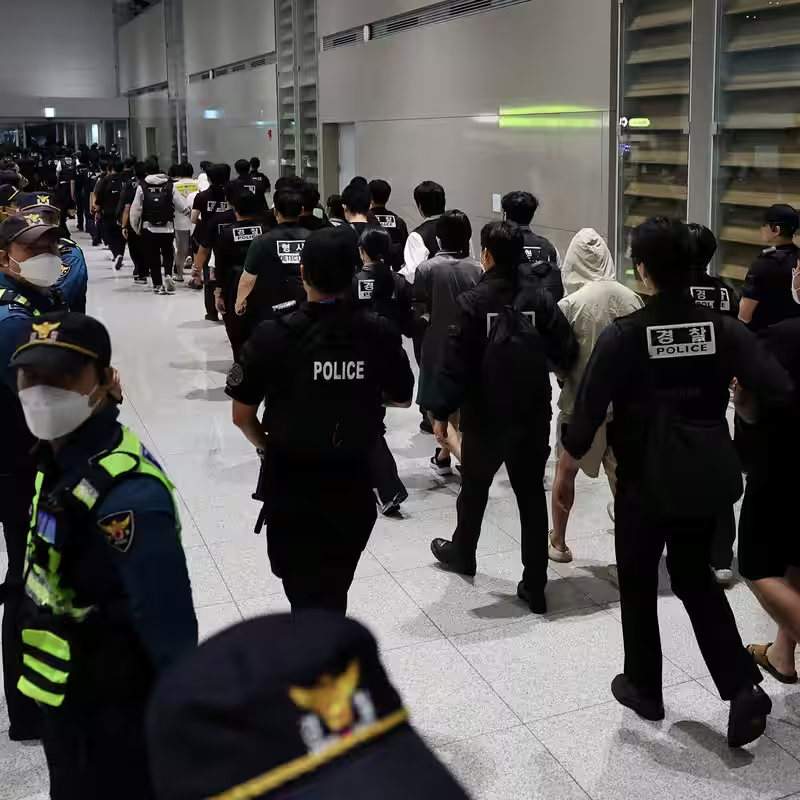Inside the $64B Scam Empire Targeting Americans
From Kansas to Phnom Penh, a shadowy criminal network is draining billions from unsuspecting victims—using romance, fake investments, and forced labor. Welcome to the world of Southeast Asia’s booming scam center industry.
What Are Scam Centers?
Scam centers are high-tech fraud compounds, often hidden in plain sight within special economic zones in Myanmar, Cambodia, and Laos. These facilities operate like call centers—but instead of customer service, workers are forced to run elaborate online cons targeting people worldwide.
According to the U.S. Treasury Department, Americans alone have lost over $16.6 billion to these operations. Globally, the industry rakes in an estimated $64 billion annually—more than the GDP of many small nations.
How the Scams Work
The most common tactic? “Pig butchering.” Scammers spend weeks or even months building trust with victims on platforms like Facebook, WhatsApp, or Telegram—posing as financial advisors or love interests. Once trust is established, they lure victims into fake cryptocurrency investment platforms.
In one shocking case, the president of a small Kansas bank lost $47 million of depositor funds after falling for such a scheme.
Other methods include:
- Romance scams: Targeting widowed or divorced individuals with fake affection.
- Impersonation calls: Posing as bank reps to steal Social Security numbers and PINs.
- Phishing links: Directing victims to counterfeit financial portals.
Forced Labor Fuels the Fraud
Behind every scam is a victim—often a trafficked worker. Chinese nationals make up the largest group of forced laborers, but Brazilians, Indians, Filipinos, and others from Africa and Eastern Europe are also ensnared.
Many are lured with promises of IT or customer service jobs in Thailand—only to be smuggled across porous borders into fortified compounds. Once inside, they face beatings, torture, and constant surveillance if they refuse to scam.
Why Myanmar and Cambodia?
These countries offer the perfect storm for criminal enterprise:
| Factor | Role in Scam Operations |
|---|---|
| Special Economic Zones | Provide legal cover and infrastructure |
| Proximity to Thailand | Access to reliable power, internet, and transport |
| Ongoing Civil Conflict (Myanmar) | Military and ethnic militias offer protection for a cut |
| Weak Governance | Limited enforcement and widespread corruption |
Compounds often sit just meters from the Thai border—so close that Thai residents can hear the hum of backup generators across the river.
Global Crackdown Underway
Recent actions show growing international resolve:
- The U.S. and U.K. imposed sanctions on a Cambodian firm tied to major fraud.
- China, India, and South Korea repatriated hundreds of rescued citizens.
- Thailand cut power and telecom lines to key Myanmar compounds.
- SpaceX disabled over 2,500 Starlink terminals used by scammers.
Yet experts warn these efforts barely scratch the surface. “Even during China’s mass crackdown in February 2025, new scam compounds were still under construction in Myanmar,” says Jason Tower of the Global Initiative Against Transnational Organized Crime.
Why It’s So Hard to Stop
The scam economy thrives on three pillars:
- Money laundering: Profits vanish into luxury real estate and encrypted Bitcoin wallets.
- Transnational reach: Operations span Africa, South Asia, and beyond.
- Lack of coordination: Investigators move too slowly and share too little data.
Without unified intelligence sharing and financial tracking, dismantling this network remains a monumental challenge.
What’s Next?
Authorities are urging victims to report suspicious contacts immediately and avoid unsolicited investment advice online. Meanwhile, advocacy groups call for stronger international cooperation—and accountability for officials enabling these crimes.
Sources
The New York Times: Americans Have Lost Billions to Online Scams




